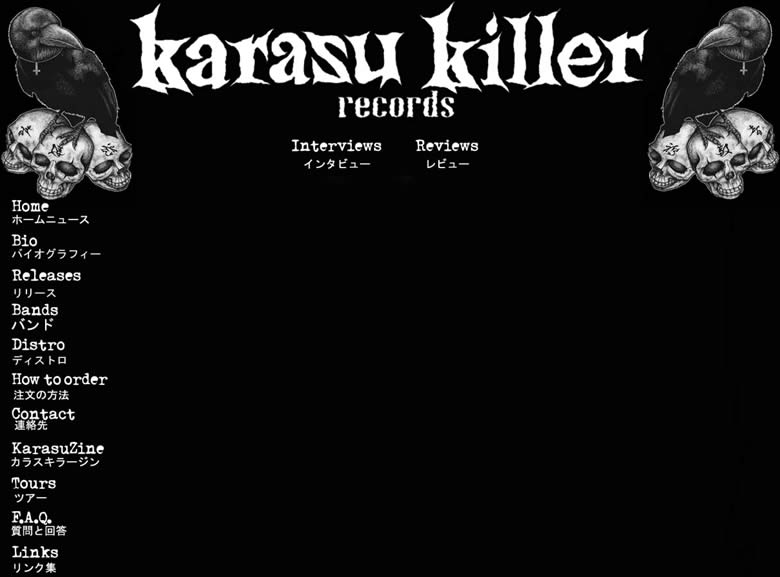
A brief history of punk rock in Brazil
Text: George H. Ferreira
Photos: Mateus Mondini
originally published in DOLL (Japan) #244
2007/11
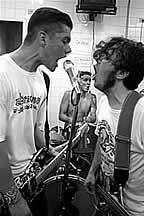 Growing up in a country like Brazil in the seventies wasn't easy. The nation was going through one of the tensest political moments of its history, the military regime, and there were not much information going around about the themes relating to the young culture in general. Censorship and political persecution were everyday terms for anyone.
Growing up in a country like Brazil in the seventies wasn't easy. The nation was going through one of the tensest political moments of its history, the military regime, and there were not much information going around about the themes relating to the young culture in general. Censorship and political persecution were everyday terms for anyone.
Even so, a lot of kids ended up embracing the most radical rock subgenres at the time, specially hard rock and glam rock from bands like Black Sabbath, MC5, Iggy & The Stooges, Sweet, Dust, Pink Fairies and Kiss among others.
The definitive change came when a young-oriented magazine, POP Magazine, started printing articles and reports about the then emerging punk scene in London, in 1976. A part of the readers, that were once fixated on icons from the past saw the light at the end of the tunnel, which then meant a different style to follow. A year later the magazine released an LP compilation called “POP Magazine presents the Punk Rock” with the Ramones, Sex Pistols, The Jam, London, Eddie and the Hot Rods, Ultravox, Stinky Toys, Runaways and more. That's when it all really began. You can say that many of the guys who heard this LP would be responsible, in the future, for starting up the first punk rock and hardcore bands in Brazil.
Between 1977 and 1978 a handful of punk gangs already walked around São Paulo, forming the basis of what was to come. The first news from overseas started showing thanks to Wop Bop, a pioneer record store that propelled the interest of the young punks by importing the most recent releases. Besides, there were the dances on proto rock clubs which also captivated these gangs and sympathizers.
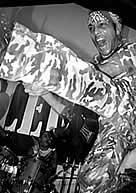 After the initial influences coming from English punk, the São Paulo punks went straight to more obscure bands like Suicide Commandos, Speedtwins, Drones, Ratsia, F-Word and more. There was really a taste for obscurity and the struggle it was to find and get these records.
After the initial influences coming from English punk, the São Paulo punks went straight to more obscure bands like Suicide Commandos, Speedtwins, Drones, Ratsia, F-Word and more. There was really a taste for obscurity and the struggle it was to find and get these records.
In 1978 the first bands appear: Restos de Nada, AI-5, Condutores de Cadáver and a bit later, Cólera. The shows happened at schools, squares, the above mentioned “rock clubs” and any other place they could find. In 1980 the scene had already changed. That was when DJ Kid Vinil, a record collector and punk rock enthusiast started a series of radio shows about punk rock and new wave. Since he traveled overseas a lot, and other Brazilians also kept in touch with friends who were overseas, there was a very big break for national punk rock.
It's important to say that São Paulo punks were perfectly in sync with what was going on in the world. Albums like “Damaged” (Black Flag), "Group Sex" (Circle Jerks), GI (Germs) or the first Discharge EPs were enjoyed here only a few weeks after their release in Europe.
Then hardcore came and influenced the Brazilian scene definitively. The country started a successful network with Europe (specially Finland, Germany and Scandinavia) besides the USA and other countries.
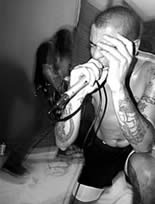 Fabio R. Sampaio, then the lead singer in Olho Seco was another important icon, not only because of his store, Punk Rock Records (which would later become a label) but also as a link for all the bands and people involved in the scene at the time.
Fabio R. Sampaio, then the lead singer in Olho Seco was another important icon, not only because of his store, Punk Rock Records (which would later become a label) but also as a link for all the bands and people involved in the scene at the time.
Many bands appeared in 1980 and 1981: Lixomania, Ulster, Ratos de Porão, Suburbanos, Hino Mortal, M-19, Fogo Cruzado, Inocentes, Guerrilha Urbana, Juízo Final and more.
This generation was involved in a traveling concert called Grito Suburbano. That was when Fabio got the idea of releasing a compilation putting together Cólera, Inocentes and his own band, Olho Seco. This LP, a groundbreaking and brave album, is considered to this day the most important record for the Brazilian scene, because it opened doors for more shows, fanzines and expositions. It's really the cornerstone.
1982 was a great year for punk rock in Brazil, because that was when an enormous festival in São Paulo took place, called “O Começo do Fim Do Mundo” (The beginning of the end of the world), which put together almost twenty bands, three thousand punks and was cut short by the police on the second day of shows. The policemen invaded the site, starting a riot among punks, and thus, establishing the high point of a generation.
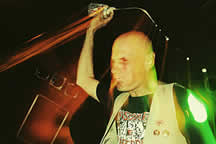 After the festival, the scene cooled off, because the violence among gangs was too much, and there were few shows happening. Even so, important records were released during that time: a compilation called SUB and singles by Lixomania, Inocentes and Olho Seco.
After the festival, the scene cooled off, because the violence among gangs was too much, and there were few shows happening. Even so, important records were released during that time: a compilation called SUB and singles by Lixomania, Inocentes and Olho Seco.
Between 1983 and 1984 bands like Lobotomia, Armagedom, Estagio Zero, Ruídos Absurdos, Brigada do Ódio and others appeared. Punk Rock Records became New Face Records, and Ataque Frontal Records was also established.
These two labels would be responsible for releasing the majority of albums from the second half of the eighties, like the Lobotomia LP (released by New Face in a partnership with the band) and albums by Cólera, released via Ataque Frontal. In 1984 “Crucificados pelo Sistema”, the debut album by Ratos de Porão was released, considered the first hardcore record in Latin America.
At that time, most bands from the first wave had ended or gone their separate ways. Ratos do Porão started experimenting with crossover, getting closer to Sepultura and slowly migrating to the Brazilian metal scene. Inocentes ended and came back with a new line-up and sound, closer to post-punk and Brazilian rock. Besides them, Cólera, Olho Seco and Garotos Podres keep going, entering new phases.
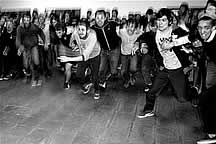 Between 1986 and 1990 the punk scene had already spread throughout the country, north and south, concentrated specially on the cultural exchange through letters, cassettes and fanzines. That really kept the scene going for years, because the shows were rare. It was a difficult and troubled time. Still, a lot of good bands came out during that period: Republika, Necrópole, Skarnio, Pupilas Dilatadas, Ação Direta, Psychic Possessor, Atack Epileptico and many others.
Between 1986 and 1990 the punk scene had already spread throughout the country, north and south, concentrated specially on the cultural exchange through letters, cassettes and fanzines. That really kept the scene going for years, because the shows were rare. It was a difficult and troubled time. Still, a lot of good bands came out during that period: Republika, Necrópole, Skarnio, Pupilas Dilatadas, Ação Direta, Psychic Possessor, Atack Epileptico and many others.
Then came the nineties, and a new scene was being born. Thrash metal and alternative rock were at the top, which turned the eyes of a lot of people towards underground music and triggered a subsequential interest in punk and hardcore too.
Ratos de Porão, already experienced in dealing with the highs and lows, started their first European tours, playing in squats, youth centers, clubs and festivals. Just like Cólera did in their heroic '87 European tour, RDP was now emblematic within Brazilian hardcore/punk, and started touring Europe annually.
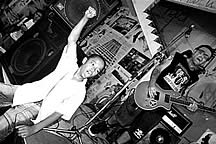 The scene kept on going timidly in the beginning of the nineties. Bands like No Violence, Safari Hamburguers, Personal Choice, Abuso Sonoro, Rot, and many others were holding together the foundation of Brazilian hardcore and paving the way for others.
The scene kept on going timidly in the beginning of the nineties. Bands like No Violence, Safari Hamburguers, Personal Choice, Abuso Sonoro, Rot, and many others were holding together the foundation of Brazilian hardcore and paving the way for others.
Around 1995, the scene started taking the shape it has today. A lot of labels and fanzines emerged and festivals and shows started happening frequently, drawing audiences, specific or not. From this time on, countless international bands started touring here, faithfully keeping the exchange that had started in the beginning of the eighties.
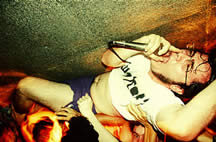 Today, the Brazilian hardcore/punk scene is going through one of its best phases, with shows and festivals going in simultaneously in many different regions.
Today, the Brazilian hardcore/punk scene is going through one of its best phases, with shows and festivals going in simultaneously in many different regions.
The variety of styles and the country's geographic extension continue producing many bands, and virtually every region in the country has its own local scene going on. Some examples are Facada, O Inimigo, Besta Fera, Possuído pelo Cão, BUSH, Arma Laranja, Naifa...Thanks to the countless efforts of everyone involved in the scene, Brazil is still an unmatched reference in worldwide hardcore, with its characteristics and musicality always reviewed and renewed year in, year out.